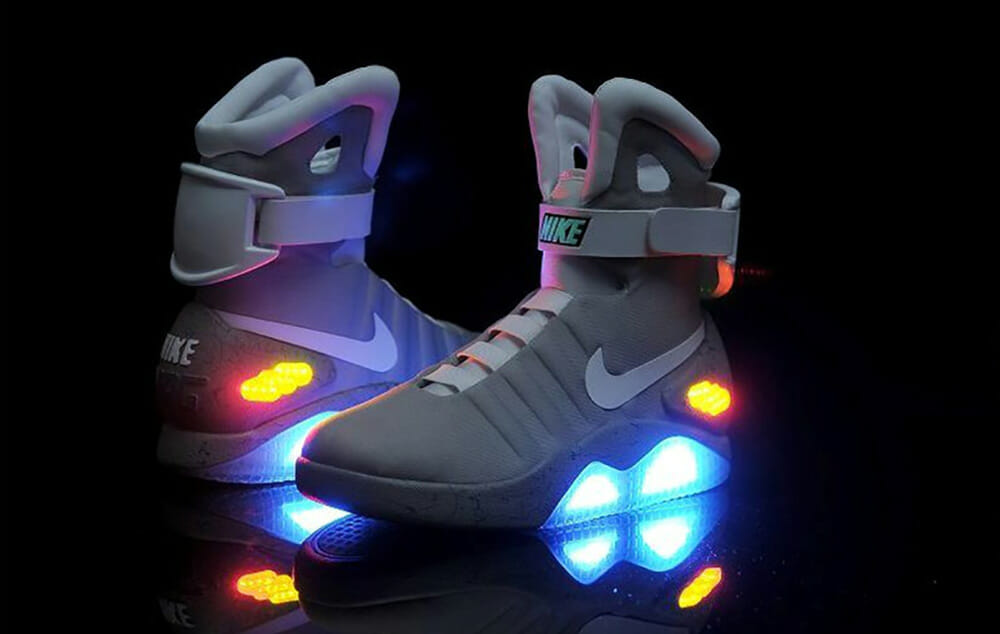We are often defined as tool-using animals. While correct to a certain extent – some animals use tools too – humans differentiate from other creatures by technological capability. Technology. Pay attention now; it is important.
The word technology is a combination of two Greek words: Techne, which translates into “art, craft,” and logos, which means “word, speech.” Discourse on the arts, both fine and applied.
Technology is a “code” that holds a “secret”. A code that the “wearable world” has been trying to crack for some time now. Look no further; you have the answer in the front of your eyes. There is no tech without art (read fashion) and art without tech.
If by “wearable technology,” most people understand fitness trackers and smartwatches, in reality, there is more to that.
The history of wearable technology reflects seven centuries of growth in the understanding, development, and usage of simple technologies that make our lives better.
Brief History of Wearable Technology
Wearable technology has been with us for longer than you might realize. Long before Google Glass and “the glasshole”, there was the eyeglass.
One of the first wearable “devices,” the eyeglass, was designed to enhance a person’s experience of the world. To allow the wearer clarity and enhanced perception.
The First Wearable Glasses

The fascinating history of wearable tech started over 700 years ago. Before the invention of the convex lens, the short-sighted had to find more ingenious ways to see.
For example, Nero, the emperor, looked through an emerald to better see his gladiators’ fights.
The history of wearable technology starts with the first eyeglass. Mentioned for the first time in 1286, according to a sermon delivered by Giordano da Rivalto in 1306.
“It is not yet twenty years since there we have the art of making spectacles.”
The Oldest Smart Ring

Let’s “travel” to China for our next stop on the history of wearable technology journey. Given some recent news, you might be tempted to think that Apple has invented the smart ring.
In reality, the tech that you can wrap around your fingers is anything but new.
Made in the Qing Dynasty era (1644-1911), the 1.2 cm long and 0.7 cm wide ring is a real abacus that sits right on the finger. Maybe that is why they call it “the abacus ring.”
The First Wearable Watch
Let’s follow the fascinating history of wearable technology in Germany. The Pomader (Bisamapfeluhr), a 1505 watch, is recognized as the first invented portable timekeeping device.
A far cry from today’s slim and precise time machines, the Pomader watch was large and inaccurate. However, rather than being just functional pieces, these watches were status symbols, being expensive to make and purchase.
“These watches were status symbols”
Let’s fast forward to 2015, to the gold-made Apple Watch. History is repeating; why should the history of wearable technology make an exception?
The First Fashion Tech

Everyone interested in fashion technology must have heard about Cute Circuit, a London-based fashion company. However, how many of you have heard of the “Electric Girls?”
“The introduction of illuminated ballet girls has greatly added to the attractions of the grand stage. Girls with electric lights on the foreheads and batteries concealed in the recesses of their clothing.” 8 November 1884. Grey River Argus. Volume XXXI. Issue 5032.Page 1.
The history of wearable technology has nothing new here. Fashion tech touched New York’s stages (read catwalk) a long, long time ago.
The First Wearable Camera

Moving on to a multimillion company that started in the back of a VW van. GoPro. Who would have guessed?
However, before we fitted drones with GoPros, we had to use pigeons. I am serious. Pigeon photography was a technique invented in 1907 by a German apothecary, Julius Neubronner.
A pigeon has an aluminum breast harness and a lightweight time-delayed miniature camera. The idea let the German army capture aerial photographs behind the enemy lines.
First-Ever Virtual Reality “Headset”

Postwar, the history of wearable technology in 1960. Morton Heilig, a cinematographer, designed the “immersive arcade experience”. Sounds like virtual reality, don’t you think?
Indeed, it was an early form of combined cinema with virtual reality. Morton called it the stereophonic television Head-Mounted Display (HMD), and shortly after that, he patented the invention.
In 1962, he patented another invention. The “Sensorama Simulator” (US Patent #3.050.870).
It was a virtual reality simulator with handlebars, a binocular display, a vibrating seat, stereophonic speakers, a cold air blower, and a device close to the nose that would generate odors that fit the action in the film.
Now if this does not make you think of portable 4DX technology, you better stop now. Go to the cinema, see “The Hunger Games,” then come back for the history of wearable technology. Tech that Morton invented fifty years ago.
Minus the chair, but you got it.
The First Wearable Computer

The sixties. You see, the sixties were not all about sex, drugs, and rock and roll. The history of wearable technology unveils for you two MIT professors, Edward Thorp, and Claude Shannon. They designed and constructed the world’s first wearable computer.
Thorp’s and Shannon’s inventions consisted of two parts. One device is concealed in a shoe, and another is placed inside a cigarette pack. This duo of devices lets mathematicians predict the outcome of many roulette games.
Let’s not forget that the “pocket-sized” attempt took place when the computers were the size of rooms. Speaking about the sixties, I shall play some “Beatles.”
The First Wristwatch Computer

The first-ever “wristwatch calculator” was introduced by Pulsar in 1975, just before Xmas time. The first “Limited Edition” of 100 pieces was available in 18KT solid gold for 3950$. Nevertheless, just like the gold Apple Watch, it was a huge success.
A few months later, a more affordable – stainless steel – version was offered for 550$. “The Calculator” was promoted as the watch “For the man who had everything until just now.”
Fact: The president of the U.S.A. at the time, Gerald Ford, wanted one for Xmas 1975. If you wonder if he got one, the history of wearable technology has it down as such: “The president’s wife had the last word.”
The First Wearable Music Player

Personal portable music did not exist for most of human history, at least not in mainstream “fashion”. Not until the Sony Walkman came along.
Sony Walkman, the first portable cassette tape player from Sony. The “icon” went on sale on the 1st of July 1979 for $150.
A portable music player that “rocked” the music industry and changed how people experienced music ever since.
Umhh….did I hear you say iPod?
The First “Backpack” Computer

While still in high school, Steve Mann wired a 6502 computer (the hardware components used in the Apple-II) into a steel-frame backpack to control flashbulbs, cameras, and photo-related gadgets, like flash lamps.
The display was a camera viewfinder CRT attached to a helmet, giving 40-column text. The “Backpack” Computer, including the flash lamps, was powered by lead-acid batteries.
Wearable Tech in the 80s

The 80s and the 90s are the times of commercial “pioneering” in wearable computing. The first wearable device with mass market impact arrived in the late 1970s.
Hewlett-Packard introduced its first calculator watch in 1977. Called HP-01, it has a top price of $850. That is almost $3.500 now in 2015. Apart from the calculator functions, these smart watches could store names, addresses, phone numbers, and even appointments.
The history of wearable technology can’t ignore the Japanese company Casio and its “fashion statement” watch, the “Databank.” Police lead singer Sting wore one in the making for “Wrapped Around Your Finger” and Michael J. Fox in “Back to the Future.”
Wearable Tech in the 90s
The history of wearable technology in the nineties. We were busy with the dissolution of the Soviet Union. Busy watching Bill Clinton “reinventing” sex. Busy with Budweiser’s Waaaasuup. Busy watching Friends and Seinfeld.
Still, we had time for “the sneaker phone”. Sports Illustrated came up with the sneaker phone as a free promo in the early 90s. A shoe and a corded phone all in one. We had good fun.
The First Touchless Payment Device

The mBracelet. Developed in 1999 by Studio 5050 in New York was “innovation on the wrist.”
Nowadays, most smartwatches include wireless payment options and come with colored, personalized bracelets and this is what the mBracelet had: Eight bright colors and the ability to compute financial transactions with ATMs.
Shame the mBracelet remained at the prototype stages. A great idea that vanished into obsolescence and never made it to the market.
It looks like the mBracelet was fifteen years ahead of its time.
The First Commercial Fashion Tech Garment

“Philips technology in every shirt and skirt,” reads the advert on their Wearable Electronics Centre in the late 90s. Together with Levi’s, Philips launched the world’s first fashion tech garment. The ICD+ jacket.
Worth mentioning here is that the project was led by a fashion designer obsessed with functionality over style and a high interest in developing innovative fabrics.
He invented the R=rubber-wool and the temperature-sensitive material, SI-product or the “Ice Jacket.”
Massimo Osti. The man that changed the clothing and the fashion world forever.
The First Commercial Wearables
The Google Glass. You can call it a head-mounted Android smartphone. The trial release of Google Glass did not go as expected. Privacy concerns, headache complaints, and even addiction to the device after periods of usage.
But before Google Glass, in 2008, we saw the appearance of the Fitbit Classic wristband. A fitness tracker that allowed the user to monitor steps, distance, kilocalories, activity intensity, and sleep patterns.
Back to smart glasses, Vuzix claims that their model Vuzix M100 is the world’s first commercially available smart glasses, well before anyone else, including Google Glass.
Big Fashion Wants Tech
The history of wearable technology shows that not only Philips wants to fusion tech with fashion. The closer to 2016 we get – the year of “computational fibers” – the more fashion tech examples we have.
With the assistance of a solar manufacturer called Pavilion, Hilfiger launched 2014 a pair of “Solar Powered Jackets”. One for men, one for women.
The “Solar Powered Jacket” has an array of water-resistant, flexible solar panels that snap on and off to collect solar power for charging your gadgets. A cable runs to a battery pack located in one of the front pockets, which in turn has a dual USB port, so you can charge two devices at once.
The Future of Wearable Tech

Wearable technology has a fascinating past. No matter how much we calculate or condition ourselves to foresee what comes ahead of us, we can never entirely predict the future.
The future is like an unexpected wave, crashing upon us with endless possibilities and surprises.
However, I see a future of embedded sensors and smart fabrics, a future of fashion technology. Humanity is “bathing” in an ocean of big data, interacting with smart appliances, autonomous cars, and smart cities. I see the “digital persona.”
I see us. Safe, connected, synchronized. I see a better you, a better me, a better world.






